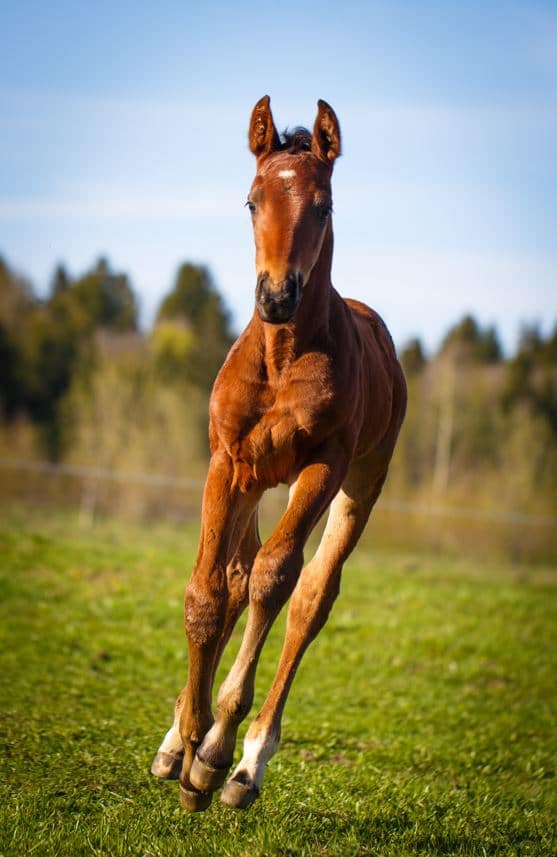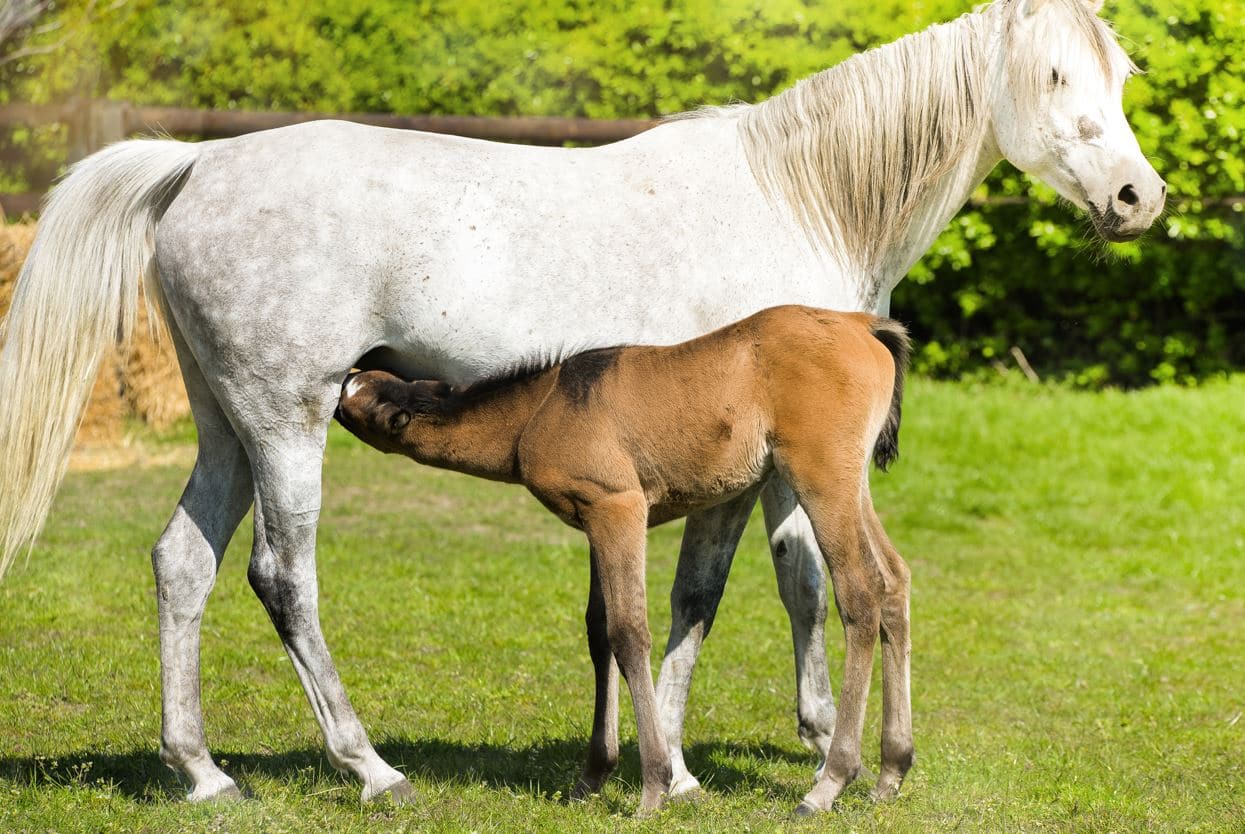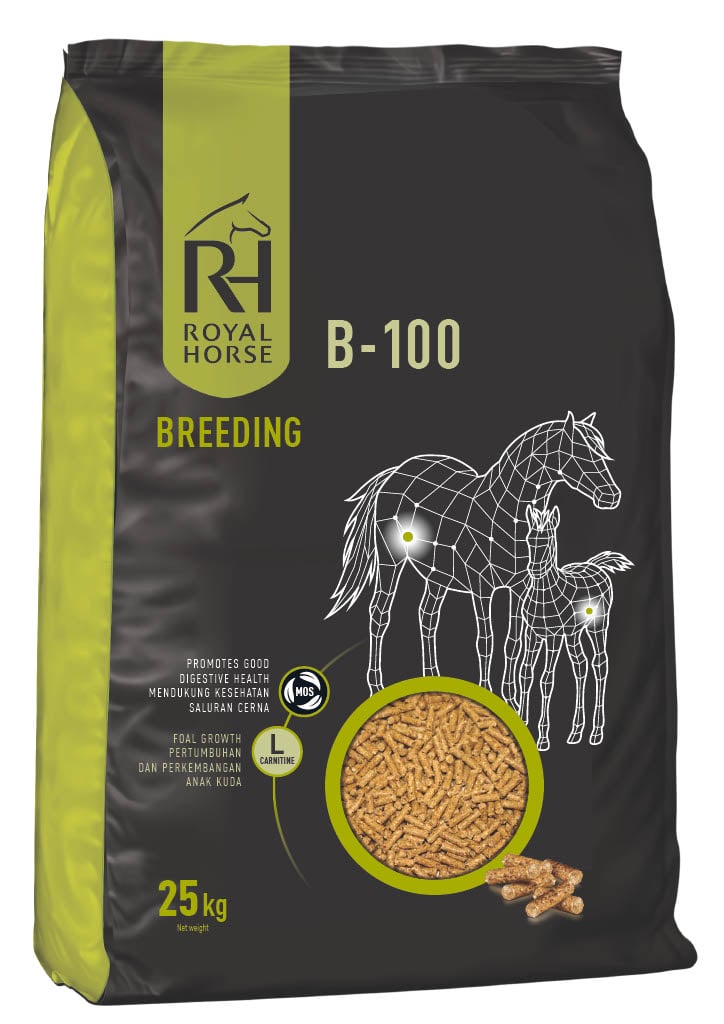The good growth of the foal will depend on various factors. First, genetic, like the breed, size, gestation period, birth weight… But also, external factors, like the mare’s milk production, the foal’s diet, the care and attention given to him during his growth. Even if all factors are favorable, problems can still occur.
The first year is crucial to your foal’s growth
It all starts with colostrum, which is the source of energy needed for the foal to suckle its mother and which will set up its first immune barrier. If you have any doubt about the quality of your mare’s colostrum, a simple test exists, the colotest. It allows you to anticipate this immunity deficit which can create complications at the time of weaning. If the mare is not a good milk producer, the foal can be given milk protein (whey) based food supplements during its growth. You can also use colostrum banks before foaling if necessary.
During the first year of growth, the foal’s growth curve shows that he develops a solid muscle mass and bone structure. He will reach 80% of his adult size during this time. The foal’s specific nutritional needs must be covered and adapted to its physiological stage. If the foal does not receive adequate food in quantity, you can use supplements to help its growth.
The mare’s lactation will be essential to ensure the foal’s development until the age of 5 or 6 months. This is the time when the foal can be weaned, i.e., physically separated from its mother. Lactating mares have very high nutritional requirements during the first months (9 to 11 UFc and 800 to 950 g of MADC for a 500 kg “French saddle” type mare). These needs almost double compared to the end of gestation, especially during the first three months of lactation when the quality and quantity of the mother’s milk are essential.
What are the nutritional needs of the foal?
The foal has qualitatively high nutritional needs in essential amino acids (fundamental protein component). The key amino acids are lysine, methionine, cystine and threonine.
During the first year, protein requirements are comparatively higher than energy requirements compared to the second year (for a foal intended for sport, such as the “French saddle”: 450 to 490 g of MADC and 4.5 to 5.5 UFc).
After this transition period between a liquid milk feed (mother’s milk) and a solid milk feed (feed to prepare for weaning), the foal will quickly eat the rearing feed with its mother, by mimicry. A specific flora will be set up in order to allow the foal to use this food properly when the time comes. Generally, breeding feeds are well adapted to the foals’ growth and to the broodmare’s nutritional needs.
Foals should not be given solid feed too early (before two or three months of age), as the foal’s intestinal flora is not yet fully functional. This would cause gastrointestinal disorders, which can be very serious. The provision of quality fodder is essential, even if the consumption in the first months is low. It is still necessary for the establishment of a cellulolytic flora, responsible for the good digestion of fibers.

The most frequent growth problems of the foal
Several problems can affect the growth of the foal:
- Infections from birth: it is essential to properly disinfect the umbilical cord during the first few days after the foal is born. Germs can enter the limbs via the bloodstream and cause swelling and fever.
- Too rapid growth of certain bones can lead to contractures. In order to properly detect them, it is important to regularly observe the foal’s legs.
- Dietary deficiencies. Protein deficiencies can prevent proper muscle or bone development. As for a mineral imbalance, it can impact the development of the skeleton.
- Conversely, excess energy intake is just as harmful to the foal’s growth. The latter is likely to develop osteoarticular lesions (osteochondrosis, which prevents the cartilage from ossifying properly).
- Growth spurs on the rudimentary metacarpals may occur due to poor footing. Although common, they are often benign.
Be sure to keep the growth chart, which records the foal’s height at regular intervals, up to date. This will allow you (or the veterinarian) to identify irregularities in his growth.
In the case of orphaned or early weaned foals, ask our technical sales staff for specific programs (we also sell milk substitutes www.via-nutritionequine.fr/produits/milk)
Contact your veterinarian if development problems persist. Royal Horse recommendation: B-100 – complementary feed for breeding horses.




